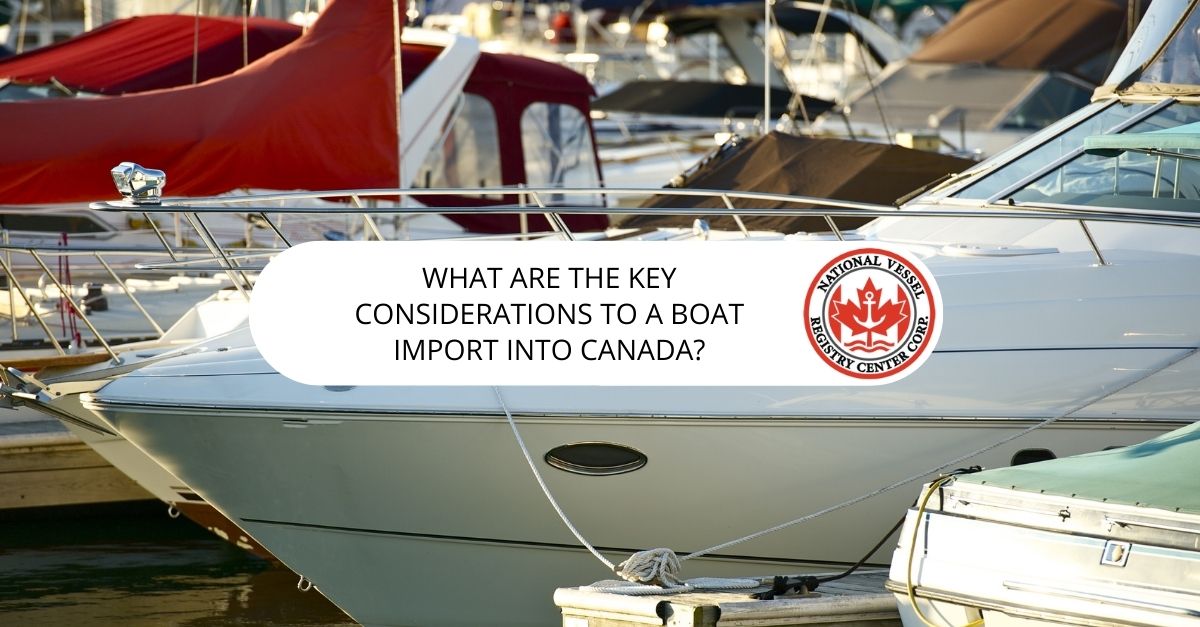Bareboat charters offer a flexible way for boat owners to lease their vessels while maintaining compliance with Transport Canada’s regulations. For Canadian boat owners considering this arrangement, understanding the legal requirements—particularly the Form 18 – Application for Bareboat Charter Registry—can make the difference.

The Canadian Vessel Registry Center Corp. simplifies the documentation process, ensuring boat owners meet all regulatory obligations efficiently.
Bareboat Charters in Canada Explained
A bareboat charter is an arrangement where a vessel is leased to a charterer without a crew, provisions, or operational management. The charterer assumes full responsibility for the vessel’s operation, maintenance, and insurance during the lease period. This differs from crewed charters, where the owner or a hired crew manages the boat.
Bareboat charters are popular for long-term leases, corporate events, or private use. However, Transport Canada requires proper documentation to ensure legal compliance. The Application for Bareboat Charter Registry is a critical document in this process.
Legal Requirements for Bareboat Charters
Before entering a bareboat charter agreement, boat owners must ensure their vessel meets Transport Canada’s requirements. Key considerations include:
1. Vessel Eligibility
- The vessel must be registered under the Canada Shipping Act, 2001.
- Commercial vessels must have valid registration and meet safety standards.
2. Charter Agreement Terms
- The agreement must clearly outline the charter period, responsibilities, and liabilities.
- The charterer must provide proof of insurance covering the vessel during the lease.
- The owner remains the registered vessel owner but transfers operational control to the charterer.
3. Submitting Form 18 – Application for Bareboat Charter Registry
To legally authorize a bareboat charter, owners must submit Form 18 through our site. This form registers the charter arrangement and ensures compliance with Canadian maritime laws.
Completing Form 18 – Step by Step
The Application for Bareboat Charter Registry requires accurate information to avoid processing delays. This includes:
Section 1: Vessel Details
- Official Number: The vessel’s registered number under the Canadian Register of Vessels.
- Vessel Name: As listed in the registration documents.
- Port of Registry: The designated port where the vessel is registered.
Section 2: Owner Information
- Full legal name and contact details of the registered owner.
- If the owner is a corporation, the business name and registration number must be provided.
Section 3: Charterer Information
- Full legal name and contact details of the charterer.
- If the charterer is a business, the company’s registration details must be included.
Section 4: Charter Terms
- Charter Duration: Start and end dates of the agreement.
- Charter Purpose: Whether for private use, commercial operations, or other purposes.
- Insurance Details: Confirmation that the charterer has obtained adequate coverage.
Section 5: Declaration & Signature
Both the owner and charterer must sign the form, certifying that all information is accurate. You can do all of this quickly and easily through our portal.
Why Proper Documentation Matters
Failing to submit the Application for Bareboat Charter Registry can result in legal complications, including fines or invalidation of the charter agreement. Proper documentation ensures:
- Regulatory Compliance: Transport Canada monitors bareboat charters to ensure adherence to maritime laws.
- Insurance Validity: Many insurers require proof of a registered charter agreement for coverage.
- Dispute Resolution: A legally documented charter helps resolve conflicts regarding liability or damages.
How the Canadian Vessel Registry Center Corp. Simplifies the Process
Filing the Application for Bareboat Charter Registry can be more complex than it may initially seem, but here at the Canadian Vessel Registry Center Corp., we streamline the process. We do that with:
- Online Submission: Eliminates the need for paper forms and postal delays.
- Expert Guidance: Step-by-step assistance to ensure accurate completion.
- Faster Processing: Reduced wait times compared to traditional mail submissions.
Additional Considerations for Bareboat Charters
Beyond submitting Form 18, boat owners should also review:
1. Insurance Requirements
- The charterer must have liability and hull insurance.
- The policy should name the owner as an additional insured party.
2. Safety & Inspection Obligations
- The charterer must comply with Transport Canada’s safety regulations.
- Regular maintenance and inspections should be outlined in the agreement.
3. Tax Implications
- Bareboat charters may have tax consequences, depending on the lease duration and revenue generated.
- Consulting a maritime lawyer or tax professional is advisable.
Finalizing the Bareboat Charter
Once Form 18 is approved, Transport Canada updates the vessel’s registration to reflect the charter status. Owners should keep a copy of the filed form and the charter agreement for their records.
By understanding the requirements and leveraging the Canadian Vessel Registry Center Corp.’s services, boat owners can navigate bareboat charters with confidence and compliance. To see how we can help, we invite you to click through our site.

